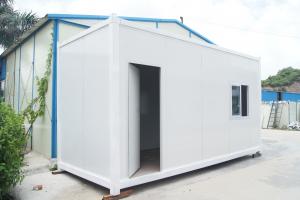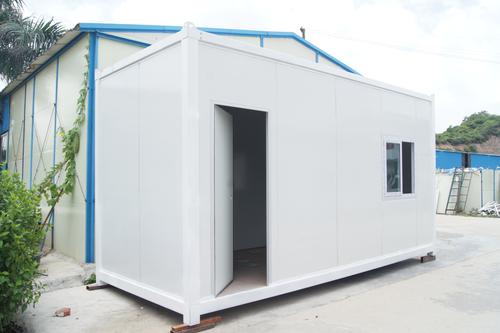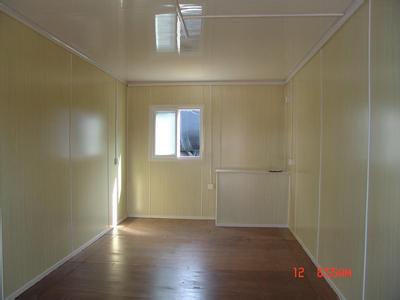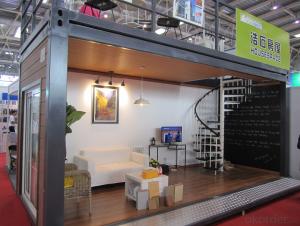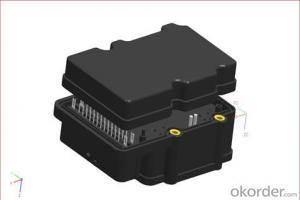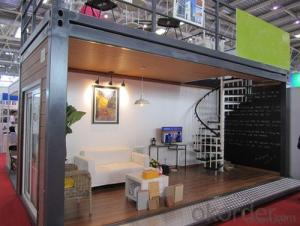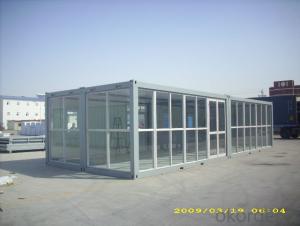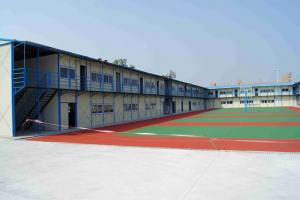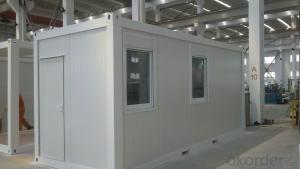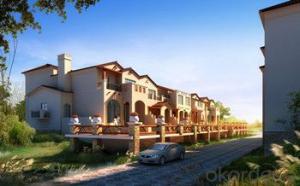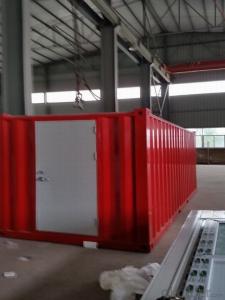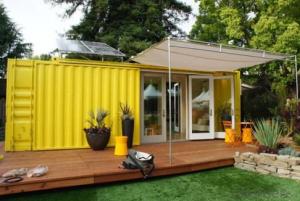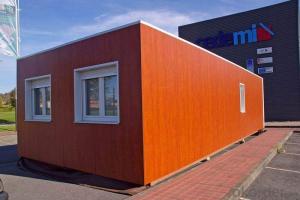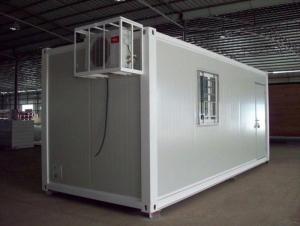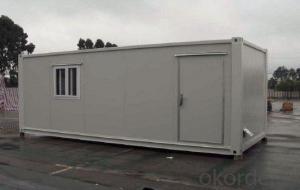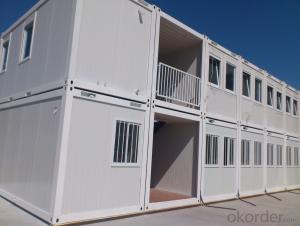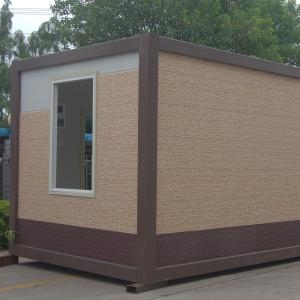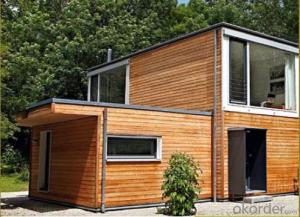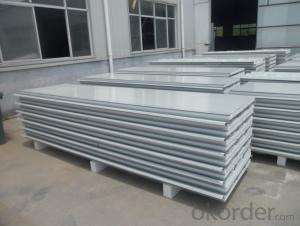Prefabricated Steel Sturcture Luxury Container House with Good Quality
- Loading Port:
- Shekou
- Payment Terms:
- TT or LC
- Min Order Qty:
- -
- Supply Capability:
- 500 set/month
OKorder Service Pledge
OKorder Financial Service
You Might Also Like
Prefabricated Steel Sturcture Luxury Container House with Good Quality
1.Structure of Prefabricated Steel Sturcture Luxury Container House with Good Quality
Prefabricated Steel Sturcture Luxury Container House with Good Quality is one kinds of the normal buildings nowadays. Its components are manufactured in the factory and prefabricated before entering the site, even can be installed in the workshop before transporting to the building location.
2.Main Features of Prefabricated Steel Sturcture Luxury Container House with Good Quality
1) Easy to assemble and disassemble with simple and common tools.
2) Good waterproof performance without extra facilities.
3) Good fireproof performance with rockwool sandwich panel.
4) Good performance of heat-insulation.
5) Safety and stable,could stand firmly over 50 years.
6) Light weight, convenient for shipment and transportation.
7) Beautiful appearance, virious colors and shapes for outer and inner roof panel and wall panel.
8) Various designs available, customized designs acceptable.
9) Wide range of application, could be used as offices, command posts, sentry boxes, dormitories, workshops,Kiosks and so on.
3. Prefabricated Steel Sturcture Luxury Container House with Good Quality Images
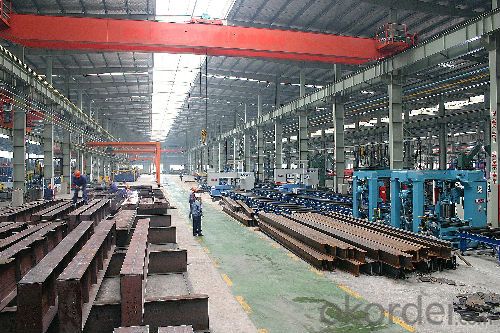
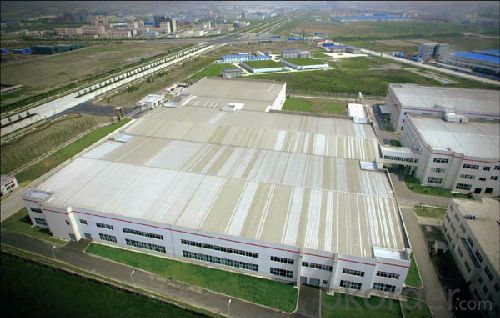
4. Prefabricated Steel Sturcture Luxury Container House with Good Quality Specification
1) Design according to customer's requirement.
2) Manufacture with high quality control.
3) Engineer helps to instruct installation.
4)Easy to assemble and dismantle.
5) Main materails: H beam/C purlin/Z purlin/sandwich panel/ corrugated steel sheet
6)Life: Over 50 years
7)Nice appearance, easy to maintenance.
8) Price different from USD 40 to USD 100 due to different size/design/raw materails grades, etc
Length: 5,800mm
Width: 2,400mm
Height: 2,620mm
Room area: 13.92m
Customized requirements are accepted
5.FAQ of Prefabricated Steel Sturcture Luxury Container House with Good Quality
We have organized several common questions for our clients,may help you sincerely:
①How about your company?
A world class manufacturer & supplier of castings forging in carbon steel and alloy steel,is one of the large-scale professional investment casting production bases in China,consisting of both casting foundry forging and machining factory. Annually more than 8000 tons Precision casting and forging parts are exported to markets in Europe,America and Japan. OEM casting and forging service available according to customer’s requirements.
②How to guarantee the quality of the products?
We have established the international advanced quality management system,every link from raw material to final product we have strict quality test;We resolutely put an end to unqualified products flowing into the market. At the same time, we will provide necessary follow-up service assurance.
③Comparing to the traditional buildings, could I know the advantage on space using?
Indoor space space flexible cold bending the light of high frequency welding thin-wall square tube, rectangular tube) compared with reinforced concrete structures, steel members has higher strength than weight, the span of the house is 9 meters, which provide residents with a larger space partition freedom, personalized home is no longer a dream.
- Q: Are container houses portable?
- Yes, container houses are portable. They are designed to be easily transported and can be moved to different locations based on the owner's preference or needs.
- Q: Can container houses be designed with solar power systems?
- Yes, container houses can definitely be designed with solar power systems. The modular nature of container houses allows for easy integration of solar panels on the roof or sides of the structure. This renewable energy source can effectively power the electrical needs of the house, making it a sustainable and eco-friendly housing option.
- Q: Can container houses be designed with a yoga or meditation studio?
- Yes, container houses can definitely be designed with a yoga or meditation studio. The flexible nature of container homes allows for customization and the inclusion of various spaces, including a dedicated area for yoga or meditation. With thoughtful design and layout planning, container houses can offer a serene and peaceful environment for practicing yoga or meditation.
- Q: Can container houses be designed with a home theater?
- Absolutely, container houses have the potential to incorporate a home theater. The versatility of container houses offers a range of design possibilities, including the option to include a home theater. By carefully planning and employing creative design techniques, the limited space within a container house can be optimized to create a comfortable and captivating entertainment area. To successfully integrate a home theater into a container house, several factors should be taken into consideration. Firstly, it is important to assess the size and layout of the container. Containers are available in various sizes, so selecting a larger container or combining multiple containers can provide the required space for a home theater setup. Next, the insulation and soundproofing aspects should be addressed to ensure an exceptional audio and visual experience. Effective insulation aids in maintaining a consistent temperature and minimizing external noise, while soundproofing materials prevent sound leakage and enhance the audio quality within the theater. Lighting is also a crucial element to deliberate. Container houses typically have limited access to natural light, so installing suitable lighting fixtures and dimmers can create the ideal atmosphere for a home theater experience. Additionally, the addition of blackout curtains or blinds can effectively block out any unwanted external light. Furniture and seating arrangements are additional important considerations. Optimal comfort can be achieved by installing cozy seating options such as recliners or sofas, ensuring a relaxing and enjoyable movie-watching experience. Moreover, incorporating storage solutions within the container house design allows for the organization of audiovisual equipment, DVDs, and other accessories. Lastly, technology integration must be carefully planned. The installation of a top-notch projector or large flat-screen TV, along with surround sound speakers, can generate a truly cinematic experience. Furthermore, the inclusion of smart home automation systems facilitates easy control of the theater's audio, video, and lighting settings. In conclusion, container houses can undoubtedly be designed to include a home theater. By considering factors such as the container's size and layout, insulation and soundproofing, lighting, furniture, and technology integration, a container house can be transformed into a cozy and immersive entertainment space for avid movie enthusiasts.
- Q: What is the cost of container renovation housing?
- the price will be very low, our unit built the container office is Looking for Shanghai Yiqiang Industrial Container Company built, the price is very low
- Q: Are container houses suitable for disaster relief efforts?
- Indeed, container houses prove to be a fitting solution for disaster relief operations. These houses, constructed from repurposed shipping containers, possess various advantages that render them a viable alternative for supplying temporary shelter in regions affected by catastrophes. To begin with, container houses can be swiftly deployed to disaster areas as they are readily accessible. Abundant shipping containers can be easily transported via land, sea, or air. This allows for a prompt response in furnishing shelter to displaced individuals and families, thereby minimizing the duration spent without proper housing. Moreover, container houses exhibit durability and resistance to inclement weather. With their construction specifically designed to withstand harsh conditions during transportation, they are ideally suited for disaster-prone regions. These structures can endure extreme weather events, such as hurricanes, earthquakes, and floods, thereby providing a secure and safe living environment for those impacted by disasters. Furthermore, container houses offer a cost-effective solution in comparison to traditional housing options. The utilization of repurposed shipping containers reduces construction expenses, making it more affordable to provide housing for a larger populace. Additionally, these structures can be easily modified and customized to cater to the specific requirements of communities affected by disasters. Additionally, container houses contribute to environmental sustainability. By repurposing shipping containers, we can decrease waste and promote eco-friendliness. These structures can be designed to incorporate energy-efficient features, including renewable energy sources and eco-friendly materials, further minimizing their environmental footprint. Lastly, container houses provide a sense of stability and privacy to those impacted by disasters. They offer individuals and families a personal space they can call their own during challenging times. These structures can be designed to include basic amenities, such as bathrooms, kitchens, and beds, ensuring that the fundamental needs of the occupants are met. In conclusion, container houses prove to be an appropriate choice for disaster relief efforts. Their accessibility, durability, cost-effectiveness, environmental friendliness, and ability to provide a sense of stability make them an exceptional option for supplying temporary housing in regions affected by disasters.
- Q: Do container houses require maintenance?
- Yes, container houses do require maintenance. Like any other type of house, container houses need regular upkeep to ensure their longevity and functionality. This may include routine inspections, cleaning, repainting, and repairs to the structure, insulation, plumbing, and electrical systems. Maintaining a container house is essential to prevent any potential issues and to keep it in good condition over time.
- Q: Are container houses suitable for emergency shelters?
- Indeed, emergency shelters can benefit greatly from the suitability of container houses. Constructed using shipping containers, these houses possess qualities of durability, resistance to adverse weather conditions, and ease of transportation. Assembling them swiftly, container houses furnish a safe and secure living environment for individuals affected by natural disasters or conflicts. Moreover, customization options allow for the inclusion of basic necessities such as sleeping areas, sanitation facilities, and cooking spaces. In terms of cost-effectiveness, container houses prove to be a more viable alternative compared to traditional construction methods, particularly for emergency response organizations with limited resources. Notably, container houses can be reused and repurposed for future emergencies, demonstrating their environmentally conscious nature. All in all, container houses offer a practical and efficient solution for emergency shelters, providing temporary housing that is both functional and sustainable.
- Q: What sizes do container houses come in?
- Container houses are available in various sizes to meet different needs and preferences. The most common sizes for container houses are 20 feet and 40 feet in length. Typically, a 20-foot container house provides about 160 square feet of living space, while a 40-foot container house offers around 320 square feet. Nevertheless, it is also possible to customize container houses to suit specific requirements. Multiple containers can be combined to create larger living spaces, or they can be stacked vertically to build multi-story homes. Some container houses even have extensions or modules to increase the overall living area. Ultimately, the size of a container house depends on individual needs, available space, and budget limitations. Whether one desires a compact and minimalist living space or a more spacious and luxurious container home, there are various size options available to accommodate different lifestyles and design preferences.
- Q: Are container houses easy to maintain?
- Yes, container houses are generally easy to maintain. They require minimal upkeep as they are built with durable materials such as steel, which is resistant to pests, fire, and rot. Additionally, their modular design allows for easy repairs and replacements of specific sections if needed. Regular cleaning and basic maintenance, such as inspecting the roof, ensuring proper insulation, and addressing any minor issues, can help keep container houses in good condition for many years.
Send your message to us
Prefabricated Steel Sturcture Luxury Container House with Good Quality
- Loading Port:
- Shekou
- Payment Terms:
- TT or LC
- Min Order Qty:
- -
- Supply Capability:
- 500 set/month
OKorder Service Pledge
OKorder Financial Service
Similar products
Hot products
Hot Searches
Related keywords
